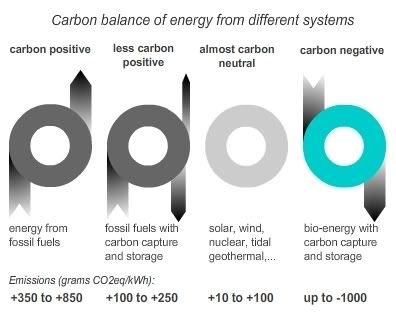Major research program for CO2-capture kicks off in Norway

SINTEF, the independent research organisation, The Norwegian University of Science and Technology and Aker Clean Carbon, the industrial technology company, on Thursday August 14 signed an agreement for an eight-year science and development programme called SOLVit. The programme has a total financial value of NOK 317 million.
Gassnova SF – the Norwegian government’s vehicle for CO2-management (capture, transport, injection and storage) – has approved financial support of NOK 34 million for the first phase of the project, which runs till the end of 2010.
Emissions from industry and power stations
The agreement concerns chemical processes that can capture CO2 from the process industry and emissions from coal and gas powered power stations. Within these sectors, it is estimated that the 4,000 largest facilities account for about 40 per cent of man-made CO2 emissions globally. The SOLVit programme aims to generate better and more cost effective processes and chemicals to manage CO2 emissions from these facilities.
International energy companies have been invited to participate in the programme. These will provide useful input from the perspective of the facility operator.
Test centre link-up
SOLVit makes SINTEF and NTNU able to consolidate the position as Europe’s leading science cluster for CO2-management. The programme includes building a large laboratory facility that will strengthen our standing in the international arena and improve our position in competition for financial support for scientific research from institutions such as the European Union, says Ms Unni Steinsmo, chief executive of SINTEF.
Results from the development research in the new laboratory in Trondheim will be tried out in test centres and in full-scale facilities already in the first phase of the programme. This makes SOLVit even more exciting.
Industrial competition
Aker Clean Carbon is heavily involved in competitions for CO2-capture projects in Norway and in the United Kingdom. Jan Roger Bjerkestrand, chief executive of Aker Clean Carbon, says the wide-ranging and thorough cooperation on scientific research under SOLVit to develop better and more energy effective chemicals for the capture and cleansing processes will strongly support the company’s standing in these competitions.
We have a clear goal to bring the cost of CO2-capture and cleansing down significantly. In phase two and three of SOLVit, the parties will try to introduce new chemical solutions and elements to the process in order to generate cost cuts. The aim is to come up with a process facility for CO2-capture that can operate on half the energy consumption of today’s processes. - Jan Roger Bjerkestrand, chief executive of Aker Clean CarbonAker Clean Carbon and SINTEF have together developed many chemical solutions based on amines, a chemical that has the ability to cleanse CO2. One of these solutions is already ready to use. Phase one of SOLVit will be used to test the other amine solutions under development by Aker Clean Carbon and SINTEF:
 energy :: sustainability :: biomass :: bioenergy :: carbon capture and storage :: carbon-negative :: climate change :: bioenergy with carbon storage :: Norway ::
energy :: sustainability :: biomass :: bioenergy :: carbon capture and storage :: carbon-negative :: climate change :: bioenergy with carbon storage :: Norway :: New laboratory in Trondheim
The programme also includes building a new laboratory at Tiller in Trondheim, which will cost NOK 42 million. SINTEF will provide NOK 25 million of the equity for the new laboratory, which will be situated next door to SINTEF’s multi-phase laboratory.
The lab will be a unique test centre for pilot projects, including a 30 metre tall tower and processing column that reached 25 metres high – identical to the height needed in full-scale industrial facilities. The lab will also be available for SINTEF’s domestic and international customers and partners.
Complete chain of laboratories
The SOLVit-programme will also involve the testing of chemicals and processes in a mobile capture facility, which has been developed by Aker Clean Carbon and is currently being built at Aker Verdal. The mobile facility is large enough to process parts of emissions from power stations and industrial sites in periods of several months at the time.
SINTEF and NTNU have already established laboratories for small-scale testing of CO2-capture. This means Norway will be among the few countries with a complete set of laboratories in this area, from testing in the lab to pilot runs at semi-industrial scale.
PhD and master students
Science and education go hand in hand in SOLVit. Using the programme as a basis, NTNU will offer positions to six doctoral candidates and ten master students within the subject of CO2-capture.
SOLVit is an important contribution to educating high-quality academic experts, for which there is great demand. The combination of education and industrial development in this project is very exciting and a great challenge. - Torbjørn Digernes, Rector of NTNU.
Joint financing
SOLVit has a budget of NOK 317 million and is led by Aker Clean Carbon. The financing is a joint effort by Aker, which is the main partner, and other industrial partners, Gassnova SF which participates through the public CLIMIT programme, and SINTEF and NTNU.
References:
Norwegian University of Science and Technology: Major research programme for CO2-capture - August 14, 2008.
 --------------
--------------
 Mongabay, a leading resource for news and perspectives on environmental and conservation issues related to the tropics, has launched Tropical Conservation Science - a new, open access academic e-journal. It will cover a wide variety of scientific and social studies on tropical ecosystems, their biodiversity and the threats posed to them.
Mongabay, a leading resource for news and perspectives on environmental and conservation issues related to the tropics, has launched Tropical Conservation Science - a new, open access academic e-journal. It will cover a wide variety of scientific and social studies on tropical ecosystems, their biodiversity and the threats posed to them.









0 Comments:
Post a Comment
Links to this post:
Create a Link
<< Home